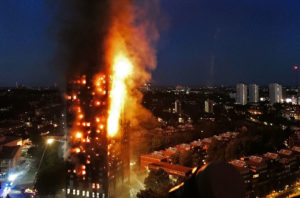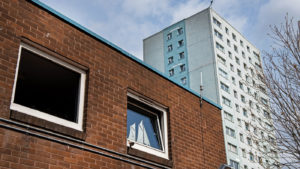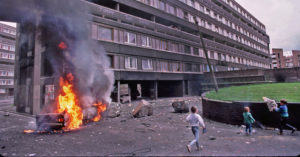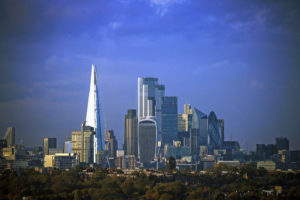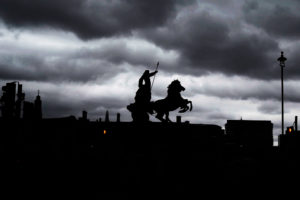The Grenfell Inquiry began hearing live evidence four years ago, a year after the fire. This mammoth legal process is now coming to a close. Evidence will conclude in July, in an echo of how the process began, with an examination of the factual circumstances surrounding each death.
The inquiry turned out to be much more than a simple examination of a botched refurbishment on a West London estate. Instead it has given the public a rare glimpse of the various structures whose failures contributed to the fire. None of them ought to escape with reputation intact. Not the housing sector, not the construction industry, nor the fire service or central government.
What has emerged is a profoundly depressing portrait of a private sector with a near psychopathic disregard for human life, and a public sector which exists to do little more than serve or imitate it.
Sadly, though, pandemic, unending political turmoil, and a major war have pushed the revelations about defective building regulations, cost-cutting, and missed warnings away from the public eye. Aside from an excellent BBC podcast, there has barely been a ripple in the national media about these revelations.
The first module of the inquiry focused on the refurbishment work that took place at Grenfell. Architects, sub-contractors and surveyors took to the stand. The most important information regarded the way in which the tower’s deadly cladding was selected for use. Original designs had specified a zinc product for the system, which would not have been combustible.
But the council had only set a budget of £8.5 million for the tower’s refurbishment — including cladding, new windows, a new communal heating system and the conversion of commercial units to new flats. The original contractor priced the work at closer to £12 million.
The council was advised by its consultants to either increase its budget or abandon the project, warning that it would “fail” if it continued. That advice was ignored. Instead, the council’s management company (the Kensington and Chelsea Tenant Management Organisation (KCTMO)) procured a new contractor, Rydon, which agreed to take it on at the knock-down price of £9.2m. This was still above the council’s budget — so KCTMO and Rydon held a secret “offline” meeting without minutes to discuss making further cost savings, going outside the normal procurement rules. A big money saver which appears to have been agreed at this meeting was the cladding — switching to a product called “aluminium composite material (ACM)” would save around £300,000.
It would emerge that the savings were actually more substantial than this, but Rydon disguised the true value from KCTMO in order to maximise its own profits. “We will be quids in,” wrote one manager in an email.
ACM was widely used in the UK at the time, but its fire risks were no secret: it had been linked to several huge fires globally. The team who refurbished Grenfell all claimed to have no knowledge of this — although one did email internally to note that “the ACM will be gone very quickly in a fire” during a debate about the necessary strength of fire breaks.
Next, the inquiry turned to how the organisations which sold highly combustible cladding and insulation had tested and marketed them in the years before the fire.
We heard that the French arm of the multinational giant Arconic had tested its ACM cladding panels in 2004. These tests revealed that when bent into a “cassette” shape they burned 10 times as quickly and released seven times as much heat, and could not even obtain the minimum European fire classification.
Rather than removing this particular product from the market, they branded the test a “rogue result”. They kept on selling it. Internal emails warned of the risks, with technical staff warning “we are in the know” and that the true nature of the panels needed to be kept “very confidential”. One senior member of the team even speculated about a tower block fire clad in its panels killing “60 to 70” people.
Changes in fire regulations did start to limit the use of ACM in much of Europe. But due to a defunct fire standard which was never removed from UK guidance, it was able to keep selling the product here. It would be sold for use on Grenfell in the particularly dangerous cassette form. The manufacturers of the insulation boards which sat behind the external cladding — Kingspan and Celotex — also had testing which revealed a potential risk in systems involving their products.
Kingspan drastically failed a large-scale test in 2005, with a system containing its foam insulation described as a “raging inferno” in an internal document. Yet it was able to obtain certification to continue targeting high rise jobs for the next 12 years, without disclosing this test. A small amount of the insulation ended up on Grenfell.
A larger amount was provided by Celotex, which also failed a test in early 2014, before passing a repeat. This second test featured additional fire resisting boards placed around key temperature monitors, which were never disclosed in its marketing. One of its former employees accepted that this behaviour amounted to a “fraud on the market” when questioned.
One of the most shocking moments of the inquiry was within the third area of its investigation. This looked broadly at the many failures in the tower’s management. Grenfell housed 37 residents who had disabilities that hindered their ability to escape in an emergency. On the night of the fire, 15 of them died, several alongside friends and relatives who would not leave them in the burning building.
The inquiry heard that the management company had done nothing to identify these residents, or plan for their escape. In fact, when the London Fire Brigade asked if there were any disabled residents in their housing stock, the building’s risk assessor advised that KCTMO should “say you have nobody”, otherwise “questions like why were they not included in the building’s [risk assessment] spring to mind”.
KCTMO staff defended not producing plans for the evacuation on the basis that they were following government guidance from 2011 which said doing so was “usually unrealistic”. This went against other legal provisions, but does appear to have become standard practice in the housing sector — with thousands of disabled people living in high rises with a similar lack of protection.
Startlingly, the Home Office recently announced it would not implement the inquiry’s recommendation that housing providers should be legally obliged to provide such plans.
Westminster has been consistently found out during the inquiry. The UK government department responsible for building regulations knew from cladding tests conducted in 2001 that ACM systems — like the one on Grenfell tower — were flammable. The result of this testing was delivered to ministers in September 2002, along with a warning that the highly combustible cladding was, perversely, acceptable under standards included in official guidance.
But amid industry resistance to higher standards — which were said to “limit market choice” — the guidance was never altered. The testing which revealed the horrendous fire performance of the cladding was “deliberately covered up” to “avoid triggering a cladding crisis”. A former senior civil servant said he could “see why people might think that” but insisted it is not what happened.
Other warnings were missed. Eight years before Grenfell, an extraordinarily similar tragedy killed six people at the Lakanal House block in south London. The ensuing coroner’s inquest concluded in spring 2013 and recommended changes to building regulations. But the Government had strict rules preventing the introduction of new regulations (or “burdens on industry” as they were termed) and chose not to tighten the rules.
In July 2014, civil servant Brian Martin — who was responsible for the building regulations guidance — attended an industry seminar which specifically warned the guidance needed to be tightened to rule out the use of ACM on tall buildings. Nothing was done.
And in February 2016, a cladding contractor emailed him to express concern that “there are many such buildings [with ACM] and their numbers are growing”. But Martin did not pass this “red alert” warning on to his seniors, despite having personally assured them that an ACM fire could not happen in the UK. He was well aware of the risk of this product writing in one email: “It’s very rigid and makes nice shiny buildings. Sadly when it gets exposed to a fire the aluminium melts away and exposes the polyethylene core. Whoosh!” He never checked if the cladding was being used in the UK, or acted to remove the standard from the guidance which permitted its use.
The inquiry was full of bitter of lessons and terrible news. The evidence comes together to weave a tapestry of staggering failure across the public and private sectors. Sitting behind these errors is a story of decay that can be traced back to an absence of state intervention. Inadequate funding, hands-off regulation, and privatisation — all contributed to the deterioration of these sectors. At times, it is difficult to know how the inquiry can even approach making recommendations without telling us to rip up our entire political model and start again.
At the very least, degrees of change are needed. Testing and certification should be removed from the hands of private bodies. Deregulation should always be moderated by the need to protect life. Residents need more power to challenge their landlords (whether social or private), in order to hold them to account. Progress in all of these areas is slow and partial. Hearing ministers boast about the prospect of cutting red tape after Brexit suggests it may be short-lived.
The inquiry itself is still running: final expert evidence is being heard and it will move to what will doubtless be a painful examination of the circumstances of each death, in order to fulfil obligations under the Coroner’s Act. Then there will be a pause while we await the final report, and then, finally, the police investigation will take over.
Should anyone be taken to trial, the process will stretch out for years. The inquiry may have given us something approaching the ugly truth about what happened, but five years after the fire, the road to the justice and change that bereaved and survivors are desperate to see is fraught.
Disclaimer
Some of the posts we share are controversial and we do not necessarily agree with them in the whole extend. Sometimes we agree with the content or part of it but we do not agree with the narration or language. Nevertheless we find them somehow interesting, valuable and/or informative or we share them, because we strongly believe in freedom of speech, free press and journalism. We strongly encourage you to have a critical approach to all the content, do your own research and analysis to build your own opinion.
We would be glad to have your feedback.
Source: UnHerd Read the original article here: https://unherd.com

